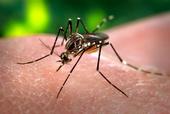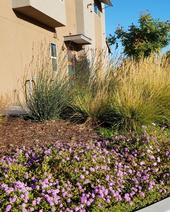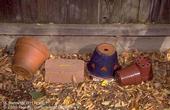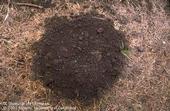
(Credit: James Gathany, Centers for Disease Control and Prevention)
With recent rains in many parts of California and the weather warming up, it's time once again to think about mosquito prevention and control. Even though we are all mostly indoors right now, there are things we can do to reduce mosquito-breeding areas in our backyards, gardens, patios, and other areas that hold standing water. UC IPM has information to help.
In the newly revised Pest Notes: Mosquitoes, you'll find general mosquito prevention tips as well as information on the most recent mosquitoes to become established in California: species in the...
- Author: Karey Windbiel-Rojas

[Originally published in the Winter 2019 issue of the Green Bulletin]
What is UC IPM?
UC IPM is a statewide program within the University of California Division of Agriculture and Natural Resources. We are dedicated to helping all Californians manage pests around the home, in the landscape, on the farm, in schools, and even on the pet. Our philosophy focuses on long-term prevention of pests or their damage through using a combination of techniques such as building out pests, modifying maintenance practices, excluding pests, using...
- Author: Tunyalee A. Martin

- Author: Karey Windbiel-Rojas
- Author: Elaine Lander

(Credit: Jack Kelly Clark)
Whether you're having a backyard barbecue or enjoying outdoor activities as the weather warms up, it's important to protect yourself from mosquitoes and their bites. Not only can these buzzing insects be a nuisance, certain mosquito species can transmit West Nile virus and other public health threats in California.
Late spring rains followed by warm, sunny days can create the perfect mosquito breeding habitat. Mosquitoes need very little standing water to lay eggs that can hatch in as little as one day. So remember, drain after the rain to fight biting mosquitoes!
What should you do to protect yourself? If...

Finding freshly dug mounds of soil in the garden, lawn, or landscape might be a sign of gophers or moles. Their mounds look similar and are frequently confused for each other.
Figure 1 shows a mole mound, which usually is volano-shaped with a circular margin. Figure 2 illustrates a gopher mound and the characteristic crescent shape and plugged opening. Actual mounds may look slightly different from these pictures, but the descriptions are typical of the two vertebrates.
The burrowing activity of both moles and gophers can damage plant roots by dislodging and drying them out. Mounds themselves can be an aesthetic problem in turf and landscapes, but they can also be tripping hazards. Both species eat plant material, and in...


